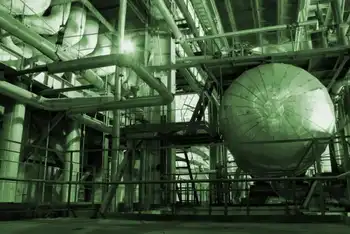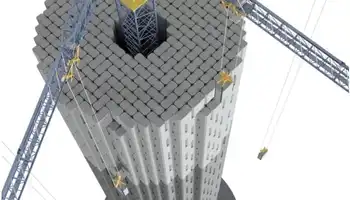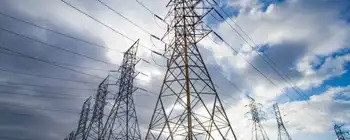Billions needed for infrastructure
TORONTO, ONTARIO - Canada needs to invest $15 billion a year over the next 20 years to upgrade its electricity system, says the head of the Canadian Electricity Association.
But Pierre Guimond wouldnÂ’t say exactly how much that massive investment is likely to cost consumers and businesses on their hydro bills.
Rising bills have been drawing anger from some consumers, and are being used by the Conservatives to attack the Liberals in the run-up to this fallÂ’s provincial election.
Guimond insisted in a speech to the Economic Club of Canada that “electricity is still a bargain” at current prices.
But he warned that prices canÂ’t stay where they are.
Investment in the power system has slowed significantly in the past 20 years, Guimond said.
“During this time, government and the electricity industry shifted their attention to keeping electricity prices as low as possible for customers,” he said.
Now, equipment is wearing out and has to be replaced, he said, triggering the need for heavy investment.
Asked afterward how much consumers should expect to pay if investment ramps up, he replied, “I don’t know what the answer is to that question, but we should be paying for the most reliable, low-cost system that’s environmentally sound that we can afford.”
Ontario isn’t alone, he said. “Right across North America over the next two decades, we’ll be paying more for electricity.”
Ontario has already signaled that investment and prices are heading higher.
Its long-term energy plan, released last year, projects investment of $87 billion over the next 20 years in the electricity system.
A typical monthly hydro bill of $114 in 2009 will by $218 by 2021, the province projects. ThatÂ’s the equivalent of $172 in todayÂ’s dollars, if inflation is factored out.
The electricity association represents companies that generate and deliver electricity.
Guimond says cost increases are inevitable.
“The cost of everything is much higher than when we first built the system,” he said.
Transformers used to be built in North America, for example, and could be expected to last 40 years, he said. Now theyÂ’re built offshore.
“They don’t last as long as the ones we used to have, and they cost a lot more,” he said.
Guimond says he expects nuclear and hydropower to remain the workhorses of the power system.
Ontario is investing heavily in renewables such as solar, wind and gas made from plant waste.
But Guimond said itÂ’s still difficult to integrate big volumes of renewable power into the system, since it can be highly variable, and often is produced when itÂ’s least needed.
“There’s a technical dimension to this,” he said. “The Europeans are struggling with it, the Americans are struggling with the same issues.”
Related News

Iran, Iraq Discuss Further Cooperation in Energy Sector
TEHRAN - Aradakanian has focused his one-day visit to Iraq on discussions pertaining to promoting bilateral collaboration between the two neighboring nations in the field of electricity, synchronizing power grid between Tehran and Baghdad, cooperating in education, and expansion of power networks.
He is also scheduled to meet with Iraqi top officials in a bid to boost cooperation in the relevant fields.
Back in December 2019, Ardakanian announced that Iran will continue exports of electricity to Iraq by renewing earlier contract.
"Iran has signed a 3-year-long cooperation agreement with Iraq to help the country's power industry in different aspects. The documents states at…




